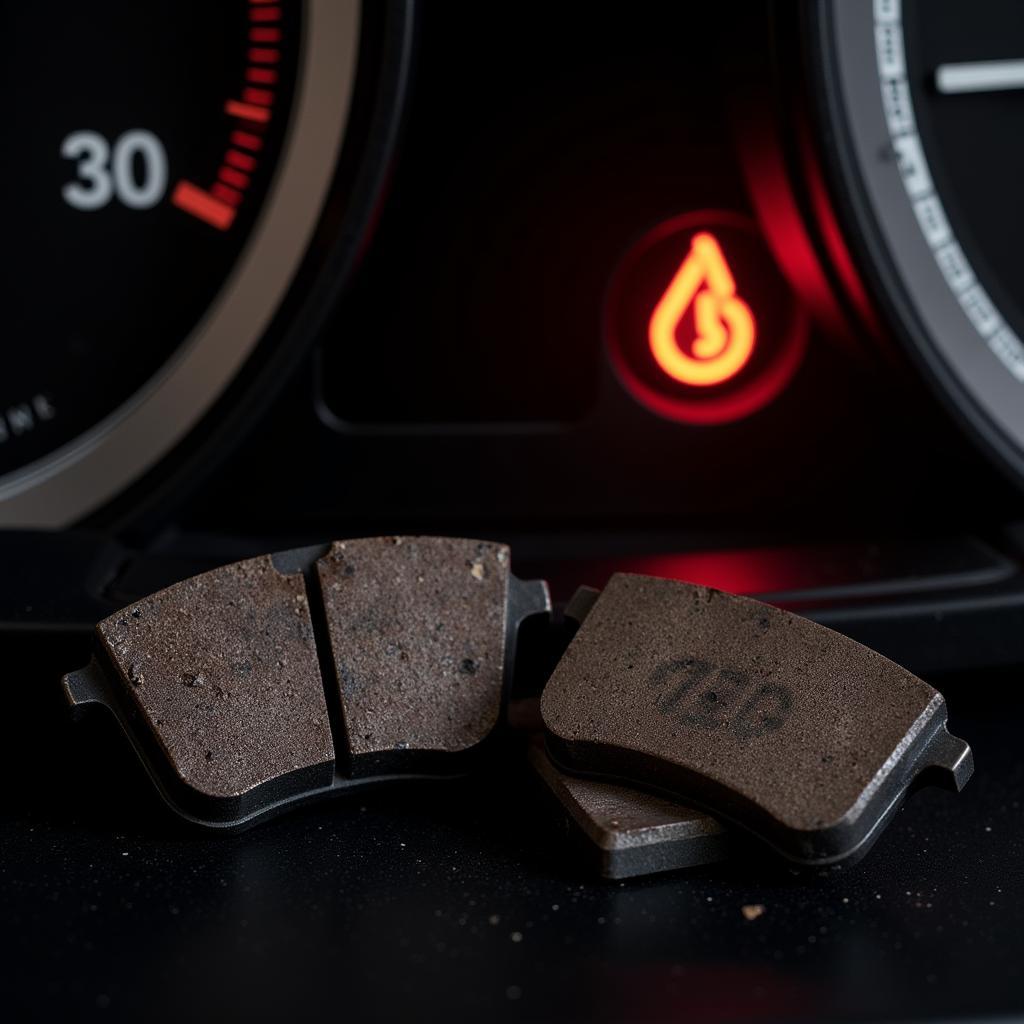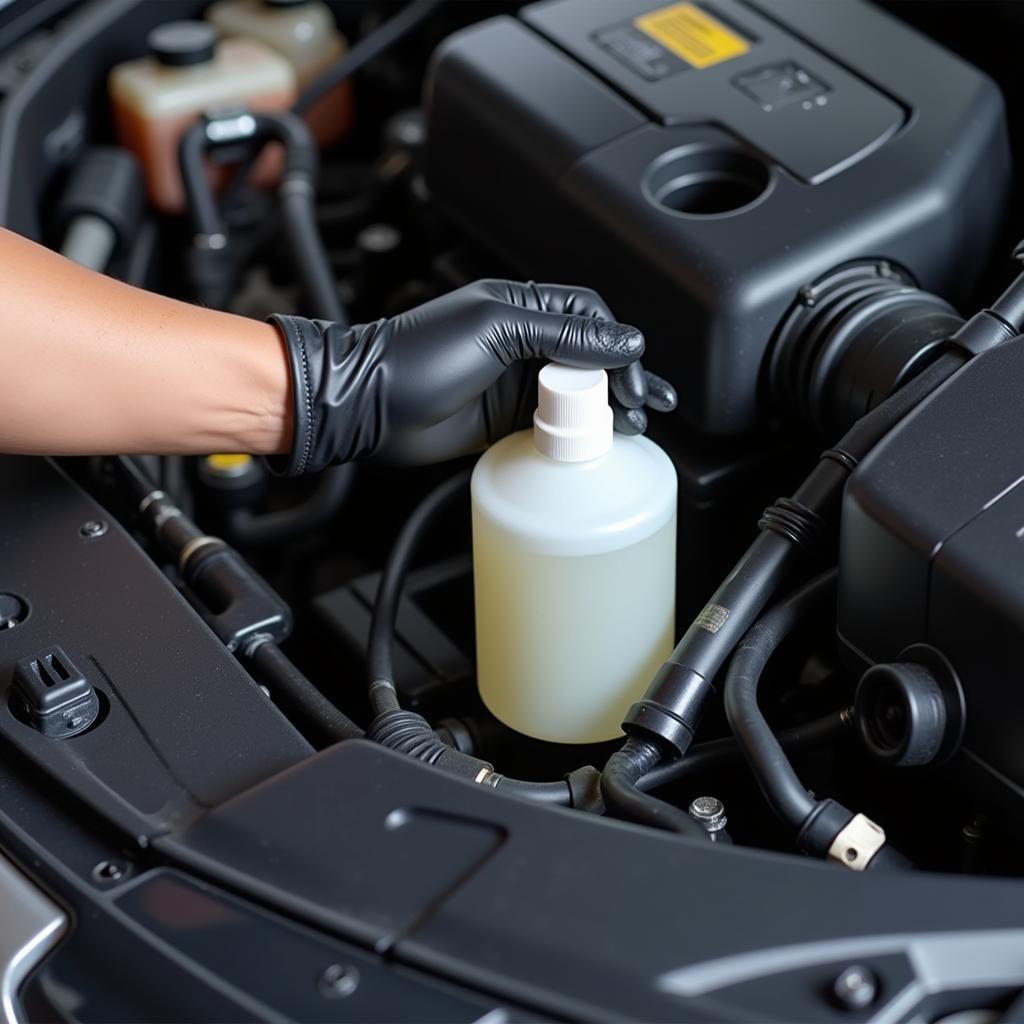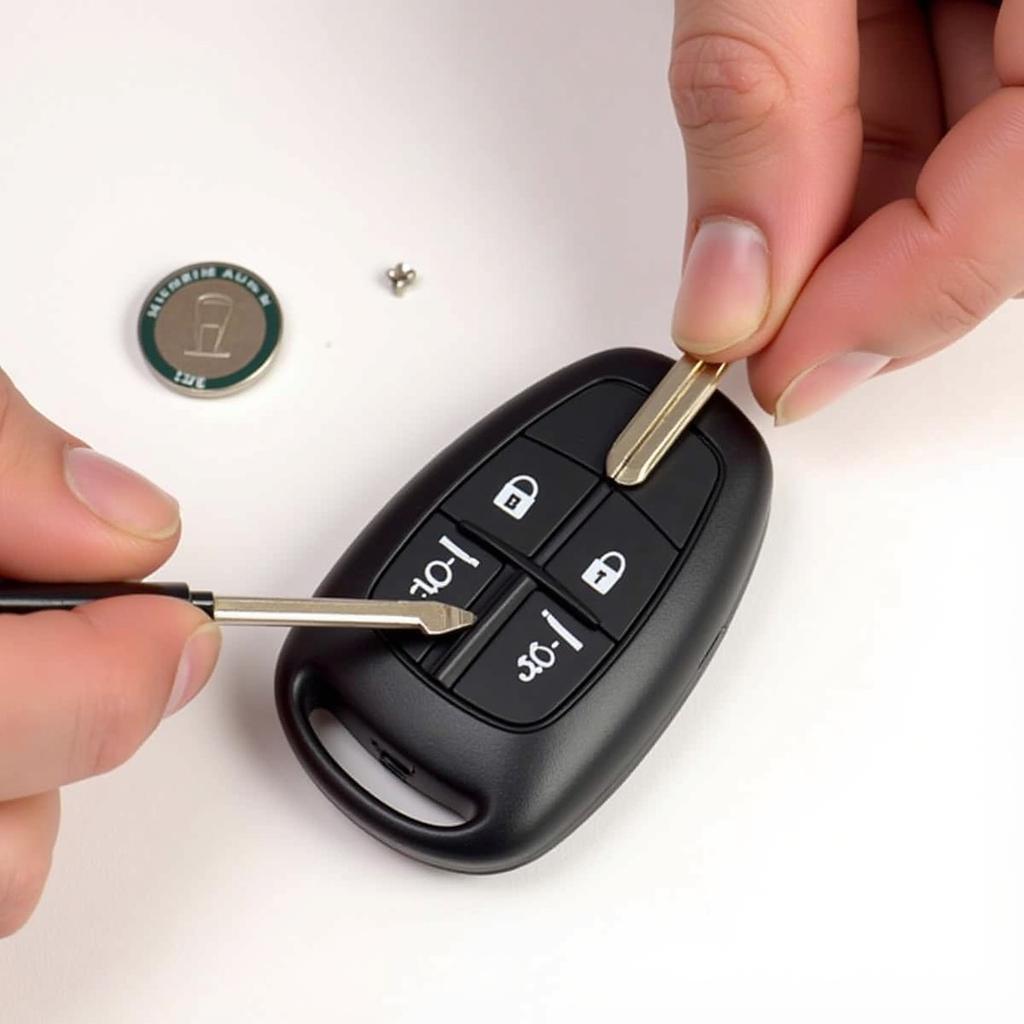The brake fluid warning light is one of the most important warning lights on your dashboard. When it illuminates, it means there’s a problem with your vehicle’s braking system that requires immediate attention. Ignoring this warning light can lead to brake failure, putting you and others at risk. This comprehensive guide delves into the common causes of a lit brake fluid warning light, potential solutions, and when to seek professional help.
Why is My Brake Fluid Warning Light On?
The brake fluid warning light typically illuminates for two primary reasons:
1. Low Brake Fluid Level: Your car’s braking system relies on hydraulic pressure to function correctly. When the brake fluid level drops too low, air can enter the system, compromising its ability to generate the necessary pressure for effective braking.
2. Worn Brake Pads: While not directly related to brake fluid, worn brake pads can also trigger the warning light. This occurs because thinner brake pads require more brake fluid to engage the calipers. If your brake pads are excessively worn, the increased fluid demand can lead to a drop in the reservoir level, activating the warning light.
 Worn Brake Pads and Warning Light
Worn Brake Pads and Warning Light
Other Possible Causes:
While low brake fluid and worn brake pads are the most frequent culprits, several other factors can contribute to a brake fluid warning light:
-
Brake Fluid Leak: A leak anywhere in the braking system, be it the master cylinder, brake lines, or wheel cylinders, can cause a significant drop in fluid level, triggering the warning light.
-
Faulty Brake Fluid Level Sensor: Like any sensor, the brake fluid level sensor can malfunction, incorrectly indicating low fluid levels even when the reservoir is full.
-
Internal Leak in the Master Cylinder: In some cases, the master cylinder’s internal seals may fail, causing fluid to leak internally without any visible external leaks.
What to Do When Your Brake Fluid Warning Light Comes On
If your brake fluid warning light comes on, it’s crucial to address the issue promptly:
-
Safely Park Your Vehicle: Find a safe location to pull over as soon as possible.
-
Check the Brake Fluid Level: With the engine off, locate the brake fluid reservoir under the hood (consult your owner’s manual if unsure). Carefully remove the cap and visually inspect the fluid level.
 Checking Brake Fluid in Car
Checking Brake Fluid in Car -
Add Brake Fluid (If Necessary): If the fluid level is low, add the correct type of brake fluid (DOT 3 or DOT 4, as specified in your owner’s manual) until it reaches the “Max” line.
-
Inspect for Leaks: Visually examine the area around the master cylinder, brake lines, and wheels for any signs of brake fluid leaks (wet spots or drips).
-
Seek Professional Help: If you notice a leak, the fluid level is consistently low, or the warning light remains illuminated even after adding fluid, contact a qualified mechanic or dealership immediately. Driving with a compromised braking system is incredibly dangerous.
Can I Drive with the Brake Fluid Warning Light On?
The short answer is no. Driving with a lit brake fluid warning light significantly increases the risk of brake failure, putting you and others in danger. If the light comes on while driving, pull over immediately when safe and follow the steps outlined above. If the problem persists, have your vehicle towed to a trusted mechanic or dealership.
Preventing Brake Fluid Warning Light Issues
Regular vehicle maintenance is crucial for preventing brake-related problems.
Here are some preventative measures:
-
Regular Brake Inspections: Have your brakes inspected by a qualified mechanic at least once a year or as recommended in your owner’s manual.
-
Timely Brake Pad Replacement: Replace your brake pads as soon as they reach their wear limit. This not only ensures optimal braking performance but also prevents excessive brake fluid consumption.
-
Brake Fluid Flush: Over time, brake fluid absorbs moisture, which can reduce its effectiveness and potentially damage braking system components. It’s generally recommended to have your brake fluid flushed every 2-3 years or as per your owner’s manual’s recommendations.
Remote Diagnostics and Software Solutions
In today’s technologically advanced automotive landscape, remote diagnostics and software solutions are playing an increasingly vital role in addressing brake system issues, including those related to the brake fluid warning light.
Toyota brake system warning light issues often benefit from these remote solutions. Specialized technicians can remotely access a vehicle’s onboard computer system to retrieve diagnostic trouble codes, pinpoint the root cause of the warning light, and even perform software updates or recalibrations if necessary.
This approach offers several advantages, including faster diagnoses, reduced downtime, and potentially lower repair costs. However, it’s essential to choose a reputable and experienced remote diagnostics provider to ensure accurate diagnoses and effective solutions.
Conclusion
Addressing a brake fluid warning light promptly is paramount for safe driving. Understanding the common causes, potential solutions, and when to seek professional help empowers you to make informed decisions about your vehicle’s safety and well-being. Remember, a well-maintained braking system is crucial for your safety and the safety of others on the road.

